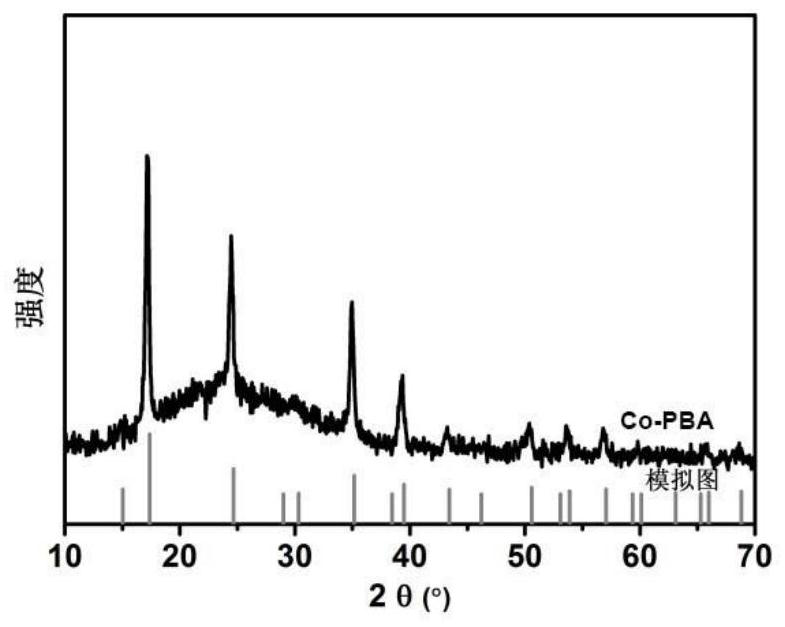Thermal or solvent dual-stimulus color-changing response nanofiber membrane and preparation method and application thereof
A nanofiber film and nanofiber technology, which is applied in the fields of fiber chemical characteristics, rayon manufacturing, textiles and papermaking, etc., can solve the problems of easy oxidation cycle performance, limited practical use, cumbersome preparation steps, etc., and achieves benefits for subsequent applications. Low, good application prospects
- Summary
- Abstract
- Description
- Claims
- Application Information
AI Technical Summary
Problems solved by technology
Method used
Image
Examples
Embodiment 1
[0053] A method for preparing a nanofibrous membrane in response to dual stimulation of heat or solvent, the steps are as follows:
[0054] (1) Preparation of Co-PBA
[0055] 149.5 mg of cobalt acetate tetrahydrate was dissolved in 20 mL of deionized water to obtain a cobalt acetate aqueous solution; 133 mg of potassium cobalt cyanide was dissolved in 20 mL of deionized water to obtain an aqueous solution of potassium cobalt cyanide. Add the above cobalt acetate aqueous solution into the potassium cobalt cyanide aqueous solution, stir under magnetic stirring for 3 minutes and mix evenly, then place the mixed solution in a water bath at 25°C for aging for 18 hours; after the reaction, collect the solid by centrifugation and wash it with water three times Finally, dry at 70°C to obtain Co-PBA nanoparticles.
[0056] (2) Preparation of spinning solution
[0057] Disperse 0.35g of Co-PBA nanoparticles prepared in step (1) in 4.5g of N,N-dimethylformamide solution, then add 0.5g ...
Embodiment 2
[0067] A kind of preparation method of thermal or solvent dual stimulus color change response nanofiber membrane, as described in Example 1, the difference is: the addition of Co-PBA in step (2) is 0.25g; other steps and conditions and Example 1 unanimous.
[0068] The SEM photograph of the Co-PBA / PAN that present embodiment 2 makes is as follows Figure 7 indicated by Figure 7 It can be seen that the Co-PBA / PAN nanofibers prepared in Example 2 have a uniform diameter, with an average diameter of 350 nm.
Embodiment 3
[0070] A method for preparing nanofiber membranes in response to heat or solvent dual stimulus discoloration, as described in Example 1, the difference is: the amount of Co-PBA added in step (2) is 0.15g; other steps and conditions are the same as in Example 1 unanimous.
[0071] The SEM photograph of the Co-PBA / PAN that present embodiment 3 makes is as Figure 8 shown by Figure 8 It can be seen that the Co-PBA / PAN nanofibers prepared in Example 3 have a uniform diameter, with an average diameter of 200 nm.
PUM
| Property | Measurement | Unit |
|---|---|---|
| diameter | aaaaa | aaaaa |
| thickness | aaaaa | aaaaa |
| diameter | aaaaa | aaaaa |
Abstract
Description
Claims
Application Information
 Login to View More
Login to View More - R&D
- Intellectual Property
- Life Sciences
- Materials
- Tech Scout
- Unparalleled Data Quality
- Higher Quality Content
- 60% Fewer Hallucinations
Browse by: Latest US Patents, China's latest patents, Technical Efficacy Thesaurus, Application Domain, Technology Topic, Popular Technical Reports.
© 2025 PatSnap. All rights reserved.Legal|Privacy policy|Modern Slavery Act Transparency Statement|Sitemap|About US| Contact US: help@patsnap.com



